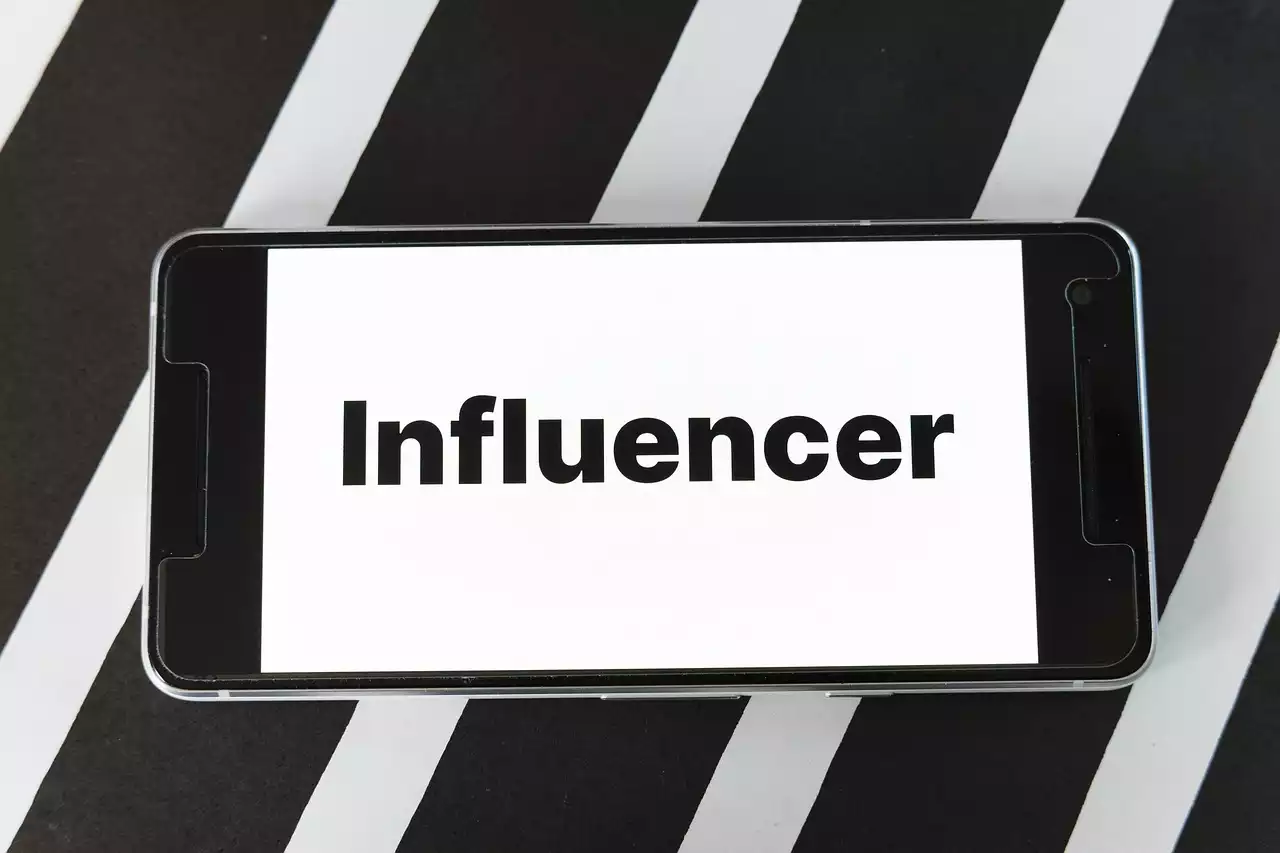What is ROI and why is it important in affiliate marketing?
ROI stands for Return on Investment, which is a metric used to determine the profitability of an investment. In affiliate marketing, ROI is key because it helps businesses determine whether their marketing efforts are generating revenue or not. By measuring the ROI of different marketing channels, businesses can determine which ones are worth investing in and adjust their strategies accordingly. When it comes to influencer partnerships, ROI is particularly important because businesses are investing time, resources, and money in collaborating with influencers. Measuring the ROI of these partnerships can help businesses determine whether they're worth the investment or not.
Measuring the ROI of influencer partnerships
So, how do you measure the ROI of influencer partnerships? There are several methods businesses can use, including:
1. Affiliate tracking software
One of the easiest ways to track the performance of influencer partnerships is through affiliate tracking software. These tools allow businesses to create unique affiliate links for each influencer they work with, which can be tracked to see how many clicks, conversions, and revenue each link generates. This data can then be used to determine which influencers are driving the most revenue and adjust strategies accordingly.
2. Google Analytics
Another way to track the success of influencer partnerships is through Google Analytics. By setting up goals and tracking the traffic and behavior of visitors who come to your website through influencer links, you can get a better understanding of how effective these partnerships are at driving revenue. You can also use Google Analytics to track the lifetime value of customers who come to your website through influencer links, which can help you determine the long-term impact of these partnerships.
3. Social media analytics
In addition to tracking website traffic and conversions, businesses can also track the performance of influencer partnerships through social media analytics. By monitoring metrics like engagement, reach, and follower growth, businesses can determine which influencers are most effective at reaching their target audience and driving engagement. This data can then be used to adjust strategies and invest in partnerships that are more likely to generate revenue.
Key metrics to track for influencer partnerships
When measuring the ROI of influencer partnerships, there are several key metrics businesses should track. These include:
1. Click-through rate (CTR)
The click-through rate measures the percentage of people who click on a link to your website after seeing an influencer's post. This metric is important because it indicates how effective the influencer's content is at driving traffic to your website.
2. Conversion rate
The conversion rate measures the percentage of people who complete a desired action on your website after clicking through from an influencer's post. This action could be making a purchase, signing up for a newsletter, or filling out a form. This metric is important because it indicates how effective the influencer's content is at driving conversions and generating revenue.
3. Revenue
Ultimately, the most important metric to track when measuring the ROI of influencer partnerships is revenue. By tracking how much revenue each influencer partnership generates, businesses can determine which partnerships are worth investing in and adjust strategies accordingly.
Tools for tracking ROI in influencer partnerships
There are several tools businesses can use to track the ROI of influencer partnerships. Some of the most popular include:
1. Impact
Impact is a comprehensive affiliate tracking software that allows businesses to track the performance of influencer partnerships, as well as other marketing channels. The platform provides real-time data on clicks, conversions, revenue, and more, making it easy to determine the ROI of each partnership.
2. Google Analytics
As mentioned earlier, Google Analytics is a powerful tool for tracking the success of influencer partnerships. By setting up goals and tracking the behavior of visitors who come to your website through influencer links, you can get a better understanding of how effective these partnerships are at driving revenue.
3. Social media analytics tools
There are several social media analytics tools available that allow businesses to track the performance of their influencer partnerships on social media platforms like Instagram and YouTube. These tools provide data on engagement, reach, and follower growth, making it easy to determine which influencers are most effective at reaching your target audience.
Tips for maximizing ROI in influencer partnerships
Now that we've covered how to measure the ROI of influencer partnerships, let's take a look at some tips for maximizing that ROI:
1. Choose the right influencers
The first step in maximizing ROI is choosing the right influencers to work with. Look for influencers who have a large following in your target audience and who align with your brand values and messaging. Avoid working with influencers who have a history of promoting products that aren't a good fit for their audience, as this can damage your brand reputation.
2. Set clear goals and expectations
Before collaborating with influencers, set clear goals and expectations for the partnership. What do you hope to achieve? How will success be measured? By setting these parameters upfront, you'll be able to track the success of the partnership more effectively and ensure that both parties are on the same page.
3. Provide clear guidelines and creative direction
To ensure that the influencer's content aligns with your brand messaging and values, provide clear guidelines and creative direction. This can include things like specific messaging points, visual style guidelines, and hashtags to use. By providing these guidelines upfront, you'll be able to ensure that the influencer's content resonates with your target audience and drives conversions.
Case studies of successful influencer partnerships in affiliate marketing
To get a better understanding of how businesses are using influencer partnerships to drive revenue, let's take a look at some case studies:
1. Glossier x Emily Weiss
Glossier, a beauty brand, partnered with Emily Weiss, the founder of Into The Gloss, to promote their products on social media. Through this partnership, Glossier was able to tap into Weiss's vast following and reach new audiences. The partnership was so successful that Glossier eventually acquired Into The Gloss, with Weiss joining the company as the Chief Executive Officer.
2. Sephora x Huda Kattan
Sephora, a beauty retailer, partnered with Huda Kattan, a popular beauty influencer, to promote their products on Instagram. Through this partnership, Sephora was able to increase their Instagram following by over 1 million and generate over $1 million in sales.
3. Nordstrom x Blair Eadie
Nordstrom, a fashion retailer, partnered with Blair Eadie, a popular fashion influencer, to promote their products on Instagram. Through this partnership, Nordstrom was able to increase their Instagram following by over 150,000 and generate over $2 million in sales.
Challenges in measuring ROI for influencer partnerships
While measuring the ROI of influencer partnerships can be incredibly valuable, there are also some challenges to consider. For example:
1. Attribution
Attribution can be a challenge when measuring the ROI of influencer partnerships because customers may interact with multiple touchpoints before making a purchase. For example, a customer may see an influencer's post on Instagram, visit the website, then make a purchase later through a different channel. This can make it difficult to determine which touchpoint was responsible for the sale.
2. Fraud
Fraud is a growing concern in the world of influencer marketing, with some influencers using fake followers and engagement to boost their popularity. This can make it difficult to determine which influencers are actually driving revenue and which ones are simply inflating their numbers.
3. Brand safety
Finally, brand safety is another concern to consider when working with influencers. Some influencers may engage in behavior or promote products that are not aligned with your brand values, which can damage your brand reputation and lead to a decrease in revenue.
Future trends in influencer partnerships and ROI measurement
As influencer marketing continues to evolve, there are several trends to keep an eye on in terms of ROI measurement. These include:
1. Micro-influencers
Micro-influencers, or influencers with smaller followings, are becoming increasingly popular as businesses look for more targeted ways to reach their audience. While micro-influencers may not have the same reach as larger influencers, they often have more engaged audiences and can be more cost-effective to work with.
2. AI-powered analytics
As data becomes more complex, businesses are turning to AI-powered analytics tools to help them measure the ROI of their influencer partnerships. These tools can help businesses identify patterns and trends in data, making it easier to determine which partnerships are most effective at driving revenue.
3. Influencer marketplaces
Finally, influencer marketplaces are emerging as a way for businesses to connect with influencers more easily and cost-effectively. These marketplaces allow businesses to search for influencers based on their audience demographics and interests, making it easier to find the right influencers to work with.






.png?size=50)



